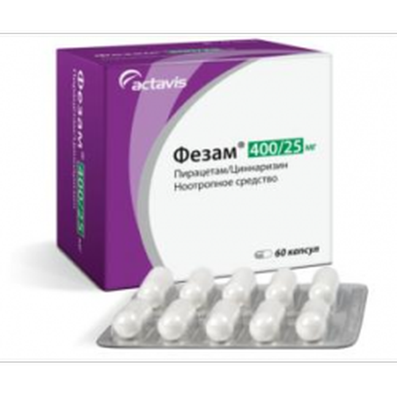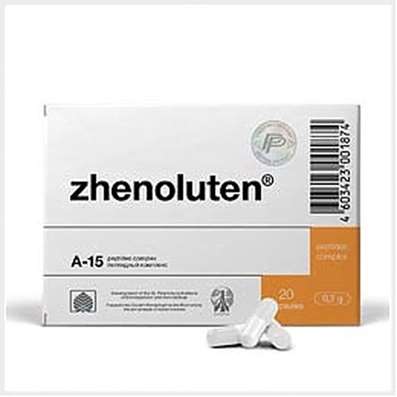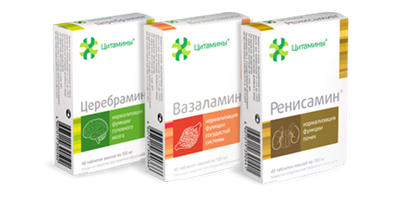Instruction for use: Haloperidol 5 mg
I want this, give me price
International Nonproprietary Name (INN): Haloperidol
Pharmaceutic group: Antipsychotic
Presentation:
Tablets 1.5 mg n50 and 5 mg n50.
Available with prescription
Indications for Haloperidol
Haloperidol is a typical antipsychotic. It is in the butyrophenone class of antipsychotic medications and has pharmacological effects similar to the phenothiazines.
Haloperidol is an older antipsychotic used in the treatment of schizophrenia and in the treatment of acute psychotic states and delirium. A long-acting decanoate ester is used as an injection given every 4 weeks to people with schizophrenia or related illnesses who have a poor compliance with medication and suffer frequent relapses of illness, or to overcome the drawbacks inherent to its orally administered counterpart that burst dosage increases risk or intensity of side effects. In some countries, injections of antipsychotics such as haloperidol can be ordered by a court at the request of a psychiatrist.
Haloperidol was discovered by Paul Janssen. It was developed in 1958 by the Belgian company Janssen Pharmaceutica and submitted to the first of clinical trials in Belgium later that year.
Haloperidol was approved by the U.S. Food and Drug Administration (FDA) on April 12, 1967, later marketed in the U.S. and other countries under the brand name Haldol by McNeil Laboratories.
Haloperidol is an antipsychotic butyrophenone. Due to its strong central antidopaminergic action, it is classified as a highly potent neuroleptic. It is approximately 50 times more potent than chlorpromazine (sold under the brand name Thorazine, among others) on a weight basis (50 mg chlorpromazine is equivalent to 1 mg haloperidol). Haloperidol possesses a strong activity against delusions and hallucinations, most likely due to an effective dopaminergic receptor blockage in the mesocortex and the limbic system of the brain. It blocks the dopaminergic action in the nigrostriatal pathways, which is the probable reason for the high frequency of extrapyramidal-motoric side effects (dystonias, akathisia, pseudoparkinsonism).
Haloperidol has minor antihistaminic and anticholinergic properties, therefore cardiovascular and anticholinergic side effects such as hypotension, dry mouth, constipation, etc. are seen quite infrequently, compared with less-potent neuroleptics such as chlorpromazine. Haloperidol also has sedative properties and displays a strong action against psychomotor agitation due to a specific action in the limbic system. However, in some cases, haloperidol may worsen psychomotor agitation via its potent dopamine receptor antagonism. Dopamine receptor antagonism, mainly of the D2 receptor subtype, can cause akathisia, psychomotor agitation, anxiety, and restlessness, which may worsen the condition of some patients.
The peripheral antidopaminergic effects of haloperidol account for its strong antiemetic activity. There, it acts at the chemoreceptor trigger zone (CTZ). Haloperidol is useful to treat severe forms of nausea/emesis such as those resulting from chemotherapy. The peripheral effects lead also to a relaxation of the gastric sphincter muscle and an increased release of the hormone prolactin, with the possible emergence of breast enlargement and secretion of milk (galactorrhea) in both sexes.
INDICATION. A comprehensive review of haloperidol has found it to be an effective agent in treatment of symptoms associated with schizophrenia. Haloperidol is also used in the control of the symptoms of:
• Acute psychosis, such as drug psychosis (LSD, psilocybin, amphetamines, ketamine, and phencyclidine), psychosis associated with high fever or metabolic disease;
• Acute manic phases until the concomitantly given first-line drugs such as lithium or valproate are effective;
• Hyperactivity, aggression;
• Acute delirium;
• Otherwise uncontrollable severe behavioral disorders in children and adolescents;
• Agitation and confusion associated with cerebral sclerosis;
• Adjunctive treatment of alcohol and opioid withdrawal;
• Treatment of severe nausea and emesis in postoperative and palliative care, especially with regards to palliating adverse effects of radiation therapy and chemotherapy in oncology;
• Treatment of neurological disorders such as tic disorders, Tourette syndrome, and chorea;
• Adjunctive treatment of severe chronic pain, always together with analgesics;
• Therapeutic trial in personality disorders such as borderline personality disorder;
• Also used in the treatment of intractable hiccups.
During long-term treatment of chronic psychiatric disorders, it should be tried—in regular intervals—to reduce the daily dose to the lowest level needed for maintenance of remission. Sometimes, it may be indicated to terminate haloperidol treatment gradually. Other forms of therapy (psychotherapy, occupational therapy/ergotherapie, social rehabilitation) should be instituted properly.
Trade name of the drug – Haloperidol
Rational chemical name: 4- [4- (4-chlorophenyl) -4-hydroxy-1-piperidinyl] -1- (4-fluorophenyl) -1-butanone.
Dosage Form: tablets
Active substance:
haloperidol - 1.5 mg or 5 mg;
Excipients: potato starch - 40.0 / 99.4 mg of lactose monohydrate (milk sugar) - 75.6 / 188.4 mg, gelatin medical - 0.5 / 1.2 mg, talc - 1.2 / 3 0 mg magnesium stearate - 1.2 / 3.0 mg.
Description:
Tablets from white to white with a yellowish shade,
For the dosage of 1.5 mg - flat-cylindrical, with a facet.
for the dosage of 5 mg - flat-cylindrical, with Valium and a facet.
Pharmacotherapeutic group: Antipsychotic
ATX code: N05AD01
Pharmacological Properties of Haloperidol Pharmacodynamics
Haloperidol - neuroleptic belonging to the butyrophenone derivatives. It has a pronounced antipsychotic and antiemetic effect. Pronounced antipsychotic activity combined with a mild sedative effect (in small doses has an activating effect).
Antipsychotic effect of haloperidol is associated with the blockade of central dopamine (D2) and a-adrenergic receptors in Mesocortical and limbic structures of the brain. The blockade of the hypothalamic D2-receptors leads to a decrease in body temperature, galaktoree (increased production of prolactin). Interaction with dopaminergic structures of the extrapyramidal system may result in extrapyramidal disorders. Inhibition of dopamine receptors in the trigger zone of the vomiting center is the basis of anti-emetic action.
Haloperidol increases the effects of hypnotics, narcotic analgesics, funds for general anesthesia, analgesics or other agents which depress the function of the central nervous system (CNS).
Pharmacokinetics
Haloperidol is absorbed mainly in the small intestine by passive diffusion. The bioavailability of 60-70%. When administered orally, the maximum blood concentration reached after 3 - 6 hours. Haloperidol 90% bound to plasma proteins. The ratio of the concentration of the erythrocytes to plasma concentration 1:12.
The concentration of haloperidol in tissues than in the blood.
Haloperidol is metabolized in the liver, is not pharmacologically active metabolite.
Haloperidol is allocated kidneys (40%) and faeces (60%), passes into breast milk. plasma half-life period after oral administration is on average 24 hours (12-37 hours).
Indications for Haloperidol
The drug is used strictly on prescription.
Acute and chronic psychosis, accompanied by excitation, hallucinatory and delusional disorder, manic state, psychosomatic disorders.
Behavioral disorders, personality changes (paranoid, schizoid, and others), Gilles de la Tourette syndrome, in both childhood and adult.
Tiki, Huntington's chorea.
Long-lasting and resistant to therapy hiccups and vomiting, including those related to anti-tumor therapy.
Premedication before surgery.
Contraindications for Haloperidol
Severe toxic CNS depression function caused by xenobiotics, coma of various origins.
CNS Diseases accompanied by pyramidal and extrapyramidal disorders (Parkinson's disease, etc.).
Hypersensitivity to derivatives of butyrophenone.
Pregnancy, lactation.
Children under 3 years old.
Due to the presence of the drug lactose (milk sugar), its reception is contraindicated in congenital lactose intolerance, lactase deficiency, glucose-galactose malabsorption.
Precautions should be taken haloperidol with decompensated cardiovascular disease (including angina, disorders of intracardiac conduction, lengthening the interval Q-T or predisposition to it - hypokalemia, concurrent use of other medications (drugs) that may cause prolongation of the interval Q-T.); with severe kidney, liver, lung and heart failure (in Vol. h. in bronchial asthma and acute infections), epilepsy, angle-closure glaucoma, hyperthyroidism (thyrotoxicosis), prostatic hyperplasia (urinary retention), active alcoholism.
Haloperidol Dosage and Administration
inside half an hour before a meal (you can with milk to reduce the irritant effect on the gastric mucosa).
The initial daily dose is 0.5 - 5 mg, divided into 2-3 receptions. Then gradually increase the dose of 0.5-2 mg (resistant cases 2-4 mg), to achieve the desired therapeutic effect. The maximum daily dose - 100 mg. The average therapeutic dose is 10-15 mg / day for chronic forms of schizophrenia 20-40 mg / day, in resistant cases up to 50-60 mg / day. The duration of treatment an average of 2.3 months. Supporting dose (outside exacerbations) from 0.5 to 5 mg / day (the dose is decreased gradually).
Children 3-12 years old (weighing 15-40 kg) - 0.025-0.05 mg per kilogram of body weight per day, 2-3 times a day, increasing the dose no more than once every 5-7 days, up to a daily dose of 0 15 mg / kg.
Patients elderly and debilitated patients designate 1 / 3-1 / 2 the usual dose for adults with its increase is not more frequently than every 2-3 days.
As an antiemetic administered 1.5 mg.
For a more precise dosing may require a different dosage form of the drug, for example, oral drops.
Side effect ofHaloperidol
From the nervous system: extrapyramidal disorders of varying severity, parkinsonism, transient Akinetes-rigid syndrome, oculogyric crises, headache, dizziness, insomnia or drowsiness (of varying severity), the state of anxiety, anxiety, agitation, anxiety, akathisia, euphoria, depression, seizures in rare cases, worsening of psychosis, including hallucinations; extrapyramidal disorders; long-term treatment - tardive dyskinesia (smacking and puckering lips, inflating the cheeks, rapid and worm-like movements of the tongue, uncontrolled chewing movements, uncontrolled movements of arms and legs), tardive dystonia (frequent blinking or spasms of the eyelids, unusual facial expression or posture, uncontrolled curving movement of the neck, trunk, arms and legs), and neuroleptic malignant syndrome (hyperthermia, muscle rigidity, difficulty breathing or shortness of breath, tachycardia, arrhythmia, increased or decreased blood pressure (BP), increased sweating, urinary incontinence, seizure disorders, depression of consciousness).
Since the cardiovascular system: when used in high doses - decreased blood pressure, orthostatic hypotension, arrhythmia, tachycardia, changes in the electrocardiogram (ECG) (prolongation of the interval Q-T, signs flutter and ventricular fibrillation).
From the digestive system: when used in high doses - decreased appetite, dry mouth, sialoschesis, nausea, vomiting, diarrhea or constipation, abnormal liver function, until the development of jaundice.
From the side of hematopoiesis: rarely - a temporary leukopenia or leukocytosis, agranulocytosis, and a tendency to erythropenia monocytosis.
With the genitourinary system: urinary retention (for benign prostatic hyperplasia), peripheral edema, pain in the breasts, gynecomastia, hyperprolactinemia, menstrual disorders, decreased potency, increase libido, priapism.
From the senses: cataract, retinopathy, blurred vision.
Allergic reactions: maculopapular and akneobraznye skin changes, photosensitivity, rarely - bronchospasm, laryngospasm.
Skin: hyperactivity of the sebaceous glands.
Laboratory findings: hyponatremia, hyper- or hypoglycemia, increased activity of "liver" transaminases.
Other: alopecia, increased body weight.
overdose
Symptoms: an overdose of the drug may cause acute neuroleptic reactions listed above. Especially should guard increase in body temperature, which can be one of the symptoms of neuroleptic malignant syndrome. In severe cases an overdose may experience different forms of impairment of consciousness up to coma, convulsive reaction.
Treatment: gastric lavage, activated charcoal. If respiratory depression - mechanical ventilation. To improve blood circulation / injected plasma or albumin solution norepinephrine. Epinephrine in these cases use is strictly prohibited! The reduction of extrapyramidal symptoms - central holinoblokatory and antiparkinsonian drugs. Dialysis is ineffective.
Interaction
Haloperidol increases the expression of inhibitory CNS effects of opioid analgesics, hypnotics, tricyclic antidepressants, funds for general anesthesia, alcohol.
While the use of antiparkinsonian drugs (levodopa, etc.) May reduce the therapeutic effect of these funds due to the antagonistic effect on dopaminergic structures.
When applied with methyldopa may develop disorientation, difficulty thinking and deceleration processes.
Haloperidol may reduce the intensity of the action of adrenaline (epinephrine) and other sympathomimetics, cause "paradoxical" decrease in blood pressure and tachycardia in their joint application.
It enhances the effect of peripheral M-anticholinergics and most antihypertensives (guanethidine reduces the effect due to the displacement of its alpha-adrenergic neurons and suppressing his capture these neurons).
When combined with the reception of anticonvulsant drugs (including barbiturates, and others. Inductors microsomal oxidation), the last dose should be increased, because haloperidol lowers the threshold for seizure activity; It may also decrease plasma concentrations of haloperidol.
Haloperidol may reduce the effect of indirect anticoagulants, so the joint reception of last dose should be adjusted.
Haloperidol metabolism slows tricyclics and MAO inhibitors, thereby increasing their levels in plasma and increased toxicity.
In an application with bupropion reduces epileptic threshold and increases the risk of seizures.
At simultaneous reception of haloperidol with fluoxetine increases the risk of side effects on the CNS, especially extrapyramidal reactions.
When concomitant administration of haloperidol and lithium, especially in high doses, can cause irreversible neurointoxications and strengthen extrapyramidal symptoms.
At simultaneous reception with amphetamines decreased antipsychotic effect of haloperidol and inducing effect of amphetamines, because of the blockade by haloperidol α-adrenergic receptors.
Haloperidol may reduce the effect of bromocriptine.
Anticholinergic, antihistamine (I generation) and antiparkinsonian drugs may enhance the effect of m-anticholinergic haloperidol and reduce its antipsychotic effects (may require dose adjustment).
The use of strong tea or coffee (especially in large quantities) reduces the effect of haloperidol.
special instructions for Haloperidol
During therapy, patients should regularly monitor the ECG, blood count, "liver" tests.
Severity of extrapyramidal disorders associated with dose, often at lower doses they can diminish or disappear.
gradual dose reduction is recommended for the development of tardive dyskinesia (until the complete withdrawal of the drug).
Care must be taken when performing heavy physical work, hot baths making (development of heat stroke as a result of the suppression of the central and peripheral thermoregulation in the hypothalamus).
During treatment should not be taken "cough" non-prescription drugs (anticholinergic effects may be increased and the risk of thermal shock).
Protect exposed skin from excessive solar radiation due to increased risk of photosensitivity.
Treatment stopped gradually to avoid the syndrome of "cancellation".
Antiemetic effect may mask signs of drug toxicity and complicate diagnosis states that the first symptom is nausea.
It is noted that the dose for children 6 mg / day cause a further improvement in disorders of behavior and tics.
Effects on driving ability and work with the mechanisms
During the reception, haloperidol prohibited driving vehicles, machinery maintenance and other work requiring high concentration, as well as the reception of alcohol.
Release form of Haloperidol
Tablets of 1.5 mg or 5 mg.
10 tablets in blisters. At 1, 2, 3, 4, 5 contour cell package together with instructions for use in a pile of cardboard.
100 tablets in a jar polymer.
500, 600, 1000, 1200 tablets in a jar polymer (for hospitals).
Each bank together with instructions for use in a pile of cardboard.
Storage conditions of Haloperidol
In a dry, dark place at a temperature no higher than 25 ° C.
Keep out of the reach of children.
Shelf life of Haloperidol
3 years.
Do not use beyond the expiration date printed on the package.
Conditions of supply of Haloperidol from pharmacies
With prescription.

 Cart
Cart





